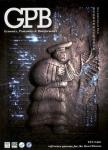Application of Deep Learning on Single-cell RNA Sequencing Data Analysis:A Review
Application of Deep Learning on Single-cell RNA Sequencing Data Analysis: A Review作者机构:Department of Population Health SciencesWeill Cornell MedicineCornell UniversityNew YorkNY 10065USA Institute for Computational BiomedicineCaryl and Israel Englander Institute for Precision MedicineDepartment of Physiology and BiophysicsWeill Cornell MedicineCornell UniversityNew YorkNY 10065USA Department of Health Service Administration and PolicyTemple UniversityPhiladelphiaPA 19122USA
出 版 物:《Genomics, Proteomics & Bioinformatics》 (基因组蛋白质组与生物信息学报(英文版))
年 卷 期:2022年第20卷第5期
页 面:814-835页
核心收录:
学科分类:0710[理学-生物学] 0711[理学-系统科学] 07[理学]
基 金:support from the National Science Foundation,USA(Grant No.1750326) the National Institutes of Health,USA(Grant Nos.R01MH124740 and RF1AG072449).
主 题:Single-cell RNA sequencing Single-cell sequencing Deep learning Deep neural network Artificial intelligence
摘 要:Single-cell RNA sequencing(scRNA-seq)has become a routinely used technique to quantify the gene expression profile of thousands of single cells simultaneously.Analysis of scRNA-seq data plays an important role in the study of cell states and phenotypes,and has helped elucidate biological processes,such as those occurring during the development of complex organisms,and improved our understanding of disease states,such as cancer,diabetes,and coronavirus disease 2019(COVID-19).Deep learning,a recent advance of artificial intelligence that has been used to address many problems involving large datasets,has also emerged as a promising tool for scRNA-seq data analysis,as it has a capacity to extract informative and compact features from noisy,heterogeneous,and high-dimensional scRNA-seq data to improve downstream analysis.The present review aims at surveying recently developed deep learning techniques in scRNA-seq data analysis,identifying key steps within the scRNA-seq data analysis pipeline that have been advanced by deep learning,and explaining the benefits of deep learning over more conventional analytic tools.Finally,we summarize the challenges in current deep learning approaches faced within scRNA-seq data and discuss potential directions for improvements in deep learning algorithms for scRNA-seq data analysis.



